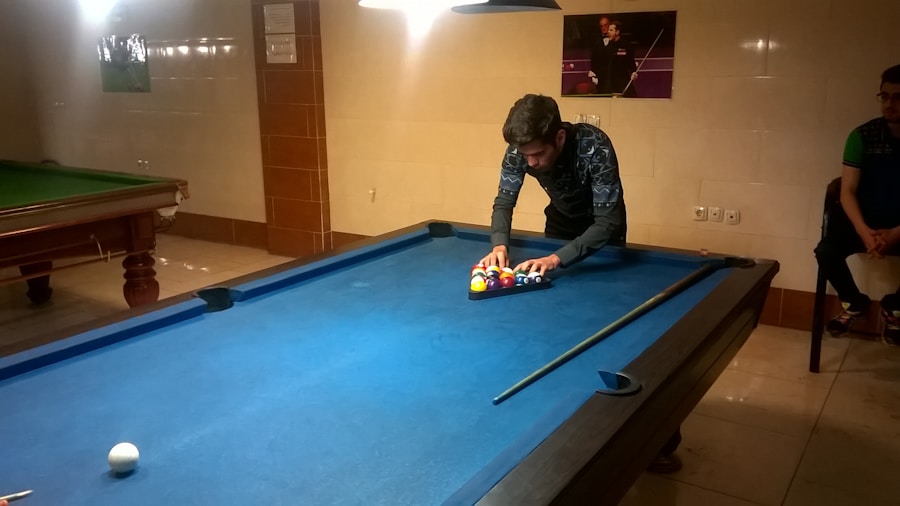Download links
How to install The Science of Bouncing Ball: A Fascinating Phenomenon APK?
1. Tap the downloaded The Science of Bouncing Ball: A Fascinating Phenomenon APK file.
2. Touch install.
3. Follow the steps on the screen.
Description
The phenomenon of a bouncing ball is a captivating interplay of physics principles, primarily governed by Newton’s laws of motion. When a ball is dropped, it accelerates towards the ground due to gravity, which exerts a force on it. This force causes the ball to gain kinetic energy as it falls.
Upon impact with a surface, the ball deforms slightly, compressing under the force of the collision. This deformation is crucial, as it allows the ball to store potential energy momentarily before it rebounds. The transformation of kinetic energy into potential energy and back again is a fundamental aspect of the physics of bouncing.
The rebound height of the ball is influenced by several factors, including the type of material from which the ball is made and the surface it strikes. For instance, a rubber ball will typically bounce higher than a tennis ball due to its greater elasticity and ability to return to its original shape more efficiently after deformation. The energy lost during the bounce, often due to heat and sound, also plays a significant role in determining how high the ball will bounce back.
The coefficient of restitution, a measure of how much kinetic energy remains after a collision, is a critical factor in this process. A higher coefficient indicates that less energy is lost, resulting in a higher bounce.
Key Takeaways
- The physics of bouncing balls involves the transfer of kinetic energy and potential energy as the ball deforms upon impact and then returns to its original shape.
- Elasticity plays a crucial role in the bounce of a ball, as it determines how much energy is stored and released during the deformation and reformation process.
- Factors such as the material, surface, and air pressure of a ball can significantly affect its bounce, making it important to consider these variables in ball design and performance.
- The mathematics of bouncing balls involves calculating the velocity, acceleration, and energy transfer during the bounce, providing valuable insights into the behavior of bouncing balls.
- Bouncing ball science has real-world applications in sports equipment design, engineering, and even in the development of new materials with improved elasticity and bounce properties.
- The future of bouncing ball research holds potential for advancements in material science, sports technology, and impact-resistant materials, with implications for various industries and everyday products.
The Role of Elasticity in Bouncing
Elasticity is a material property that describes how an object deforms under stress and returns to its original shape when the stress is removed. In the context of bouncing balls, elasticity is paramount. Different materials exhibit varying degrees of elasticity, which directly affects their bouncing behavior.
For example, a basketball is designed with a high degree of elasticity to maximize its bounce on hard surfaces, while a beach ball, made from softer materials, has lower elasticity and thus does not bounce as high. The concept of elasticity can be quantified using Young’s modulus, which measures the stiffness of a material. A material with a high Young’s modulus will deform less under stress compared to one with a low modulus.
This property is essential for sports equipment manufacturers who aim to create balls that perform optimally under specific conditions. For instance, in sports like basketball or volleyball, where high bounces are desirable, manufacturers often select materials that provide an ideal balance between durability and elasticity. The design and construction of these balls take into account not only the materials used but also their thickness and internal pressure, which can further enhance their elastic properties.
Factors Affecting the Bounce of a Ball

Several factors influence how well a ball bounces, including its material composition, internal pressure, surface texture, and environmental conditions. The material from which the ball is made plays a significant role; for example, a solid rubber ball will generally bounce higher than one made from foam due to differences in density and elasticity. Additionally, the internal pressure of the ball can dramatically affect its performance.
A fully inflated basketball will bounce higher than one that is under-inflated because the air pressure inside contributes to the ball’s ability to maintain its shape during impact. Surface texture also plays an important role in determining how well a ball bounces. A smooth surface allows for more efficient energy transfer during impact, leading to higher bounces.
Conversely, a rough or uneven surface can absorb some of the energy that would otherwise contribute to the bounce height. Environmental conditions such as temperature and humidity can also affect performance; for instance, warmer temperatures can increase air pressure within a ball, enhancing its bounce. Conversely, cold temperatures can cause materials to become stiffer and less elastic, resulting in lower bounce heights.
For more information on the factors that influence ball bouncing, you can visit this source.
The Mathematics of Bouncing Balls
| Ball Type | Initial Height (m) | Number of Bounces | Height After 1st Bounce (m) | Height After 2nd Bounce (m) |
|---|---|---|---|---|
| Tennis Ball | 2 | 5 | 1.5 | 0.75 |
| Basketball | 3 | 7 | 2.1 | 1.05 |
| Golf Ball | 1 | 3 | 0.5 | 0.25 |
The mathematics behind bouncing balls involves various equations and principles from physics that describe motion and energy transfer. One fundamental equation is derived from Newton’s second law of motion, which states that force equals mass times acceleration (F = ma). When a ball hits the ground, it experiences an impulse that changes its momentum.
The change in momentum can be calculated using the equation Δp = FΔt, where Δp is the change in momentum, F is the average force during impact, and Δt is the time duration of the impact. Another important mathematical concept is the coefficient of restitution (e), which quantifies how much kinetic energy remains after a collision. This coefficient can be calculated using the formula e = (v_bounce / v_drop), where v_bounce is the velocity of the ball after bouncing and v_drop is its velocity just before impact.
A perfectly elastic collision would have e equal to 1, indicating no energy loss, while an inelastic collision would have e less than 1. By applying these mathematical principles, one can predict how high a ball will bounce based on its initial drop height and material properties.
Real-World Applications of Bouncing Ball Science
The science behind bouncing balls extends far beyond recreational activities; it has practical applications in various fields such as sports engineering, material science, and even robotics. In sports engineering, understanding the dynamics of bouncing balls allows manufacturers to design equipment that enhances athletic performance. For example, advancements in materials technology have led to the creation of balls that optimize bounce characteristics for specific sports like soccer or basketball, improving player experience and performance.
In material science, researchers study the properties of different materials to develop new types of balls with enhanced performance characteristics. This research often involves experimenting with various composites and polymers to create balls that are not only durable but also provide optimal elasticity for bouncing. Additionally, insights gained from studying bouncing balls have implications in robotics; for instance, engineers design robots that mimic natural movements by incorporating principles of elasticity and energy transfer found in bouncing balls.
These robots can navigate uneven terrains or perform tasks that require precise movements by utilizing similar mechanics.
The Future of Bouncing Ball Research

As technology advances and our understanding of materials deepens, the future of bouncing ball research holds exciting possibilities. One area of focus is the development of smart materials that can adapt their properties based on environmental conditions or user input. For instance, researchers are exploring materials that can change their elasticity dynamically, allowing for customizable bounce characteristics depending on whether they are used in recreational play or professional sports.
Another promising avenue for research involves integrating sensors into balls to gather data on their performance during play. These smart balls could provide real-time feedback on factors such as speed, spin rate, and bounce height, offering valuable insights for athletes and coaches looking to improve performance. Furthermore, advancements in computational modeling techniques may allow scientists to simulate bouncing behavior more accurately than ever before, leading to better predictions and designs for future sports equipment.
As researchers delve deeper into this fascinating field, we can expect groundbreaking developments that will enhance our understanding and enjoyment of sports and physical activities for years to come.
If you’re interested in learning more about the popular mobile game Free Fire Max, you should check out this article on how to dominate Free Fire Max and win spectacular prizes. This article provides tips and strategies for players looking to improve their skills and increase their chances of winning in the game. It’s a great resource for anyone looking to take their Free Fire Max gameplay to the next level.
FAQs
What is a bouncing ball?
A bouncing ball is a small, round object that is designed to rebound off of surfaces when dropped or thrown.
What is the science behind a bouncing ball?
The science behind a bouncing ball involves the transfer of kinetic energy from the ball to the surface it bounces off of, causing it to rebound.
What materials are bouncing balls typically made of?
Bouncing balls are typically made of rubber or similar elastic materials that allow them to rebound when they come into contact with a surface.
What are some common uses for bouncing balls?
Bouncing balls are commonly used as toys, in sports such as basketball and tennis, and in various physics experiments to demonstrate principles of motion and energy transfer.
How does the height from which a bouncing ball is dropped affect its bounce?
The height from which a bouncing ball is dropped affects its bounce by influencing the amount of potential energy it has when it makes contact with the surface, which in turn affects the height of its rebound.





